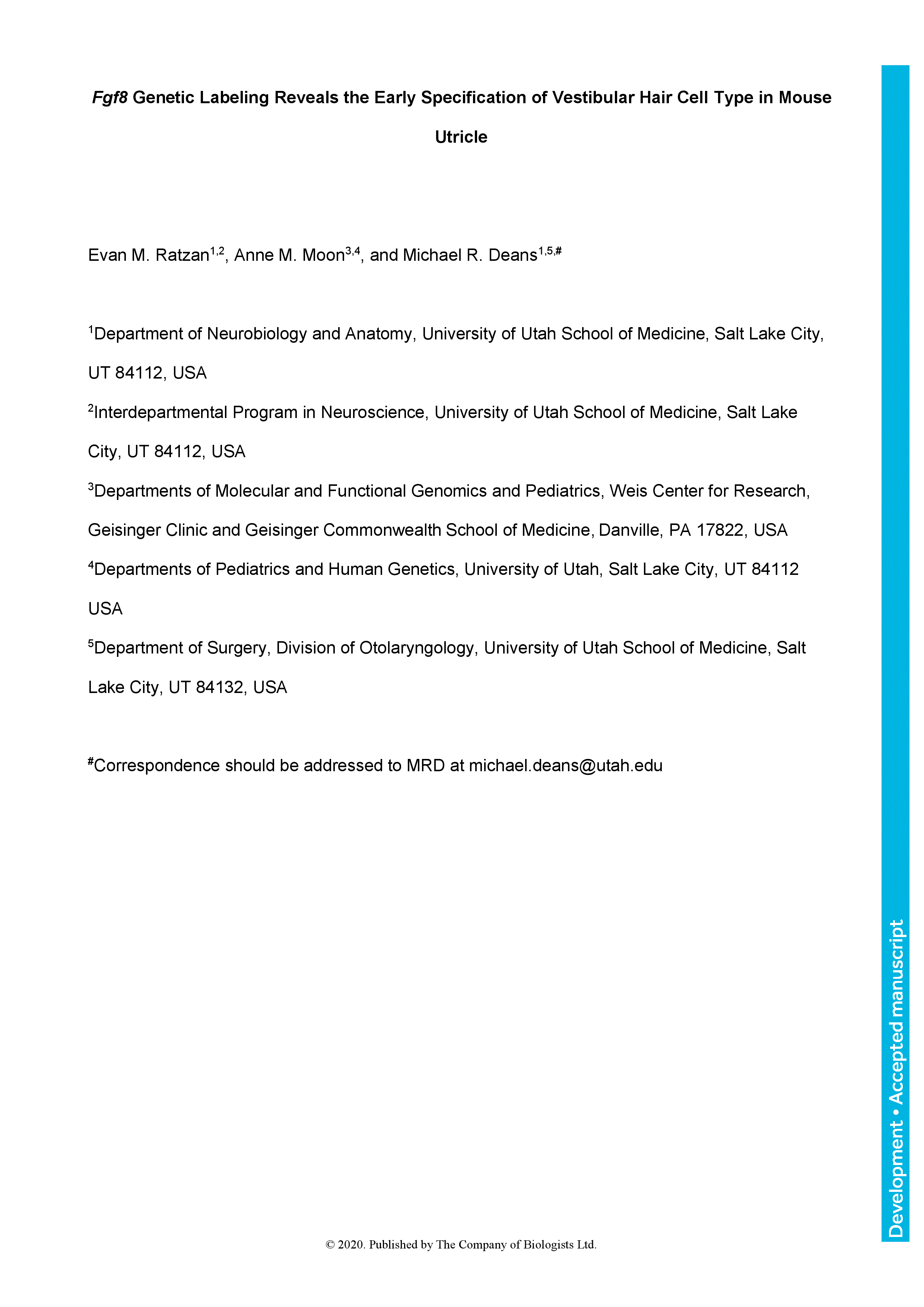FGF8 signaling plays diverse roles in inner ear development, acting at multiple stages from otic placode induction to cellular differentiation in the organ of Corti. As a secreted morphogen with diverse functions, Fgf8 expression is likely to be spatially restricted and temporally dynamic throughout inner ear development. We evaluated these characteristics using genetic labeling mediated by Fgf8mcm gene-targeted mice and determined that Fgf8 expression is a specific and early marker of Type-I vestibular hair cell identity. Fgf8mcm expression initiates at E11.5 in the future striolar region of the utricle, labeling hair cells following EdU birthdating, and demonstrates that sub-type identity is determined shortly after terminal mitosis. This early fate specification is not apparent using markers or morphological criteria that are not present before birth in the mouse. While analyses of Fgf8 conditional knockout mice did not reveal developmental phenotypes, the restricted pattern of Fgf8 expression suggests that functionally redundant FGF ligands may contribute to vestibular hair cell differentiation and supports a developmental model in which Type-I and Type-II hair cells develop in parallel rather than from an intermediate precursor.
Fgf8 genetic labeling reveals the early specification of vestibular hair cell type in mouse utricle
Currently Viewing Accepted Manuscript - Newer Version Available
Evan M. Ratzan, Anne M. Moon, Michael R. Deans; Fgf8 genetic labeling reveals the early specification of vestibular hair cell type in mouse utricle. Development 2020; dev.192849. doi: https://doi.org/10.1242/dev.192849
Download citation file:
Advertisement
Call for papers: Uncovering Developmental Diversity

Development invites you to submit your latest research to our upcoming special issue: Uncovering Developmental Diversity. This issue will be coordinated by our academic Editor Cassandra Extavour (Harvard University, USA) alongside two Guest Editors: Liam Dolan (Gregor Mendel Institute of Molecular Plant Biology, Austria) and Karen Sears (University of California Los Angeles, USA).
Choose Development in 2024

In this Editorial, Development Editor-in-Chief James Briscoe and Executive Editor Katherine Brown explain how you support your community by publishing in Development and how the journal champions serious science, community connections and progressive publishing.
Journal Meeting: From Stem Cells to Human Development

Register now for the 2024 Development Journal Meeting From Stem Cells to Human Development. Early-bird registration deadline: 3 May. Abstract submission deadline: 21 June.
Pluripotency of a founding field: rebranding developmental biology

This collaborative Perspective, the result of a workshop held in 2023, proposes a set of community actions to increase the visibility of the developmental biology field. The authors make recommendations for new funding streams, frameworks for collaborations and mechanisms by which members of the community can promote themselves and their research.
Read & Publish Open Access publishing: what authors say

We have had great feedback from authors who have benefitted from our Read & Publish agreement with their institution and have been able to publish Open Access with us without paying an APC. Read what they had to say.



